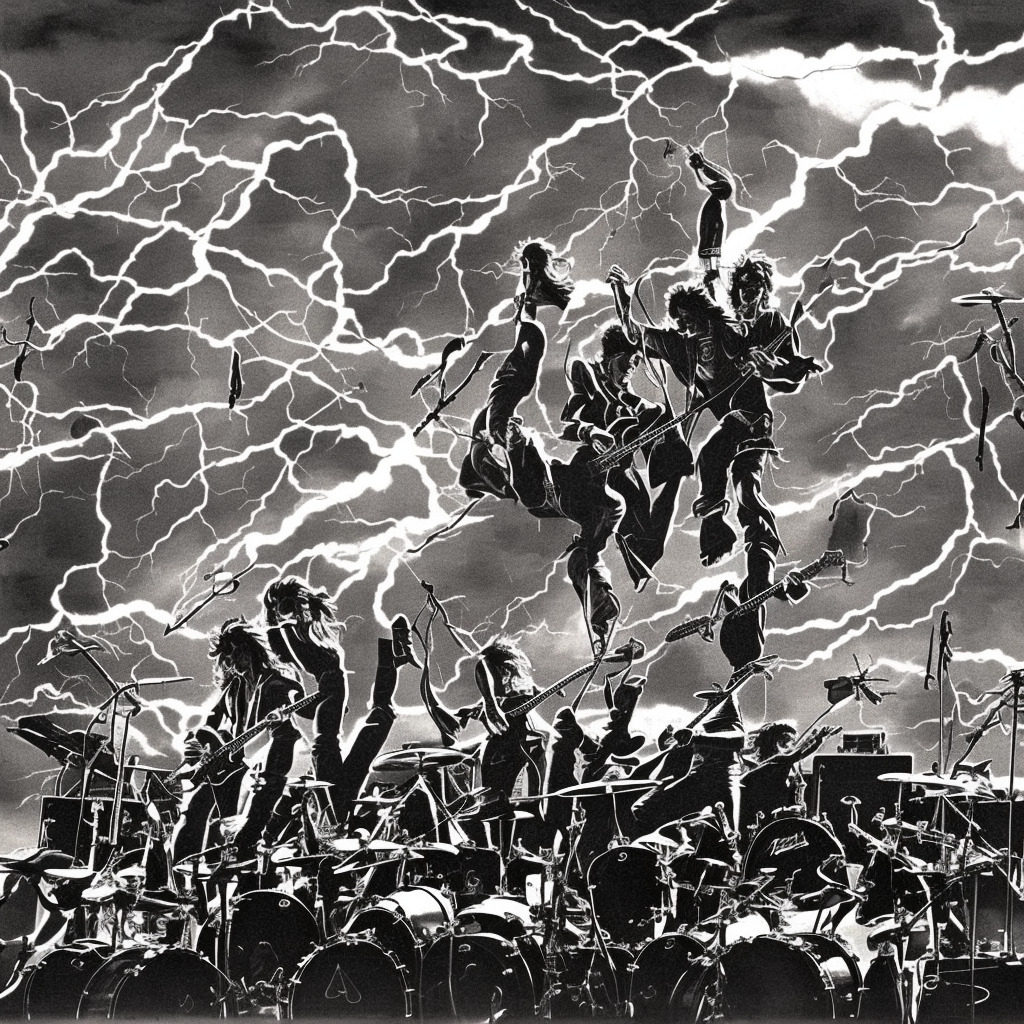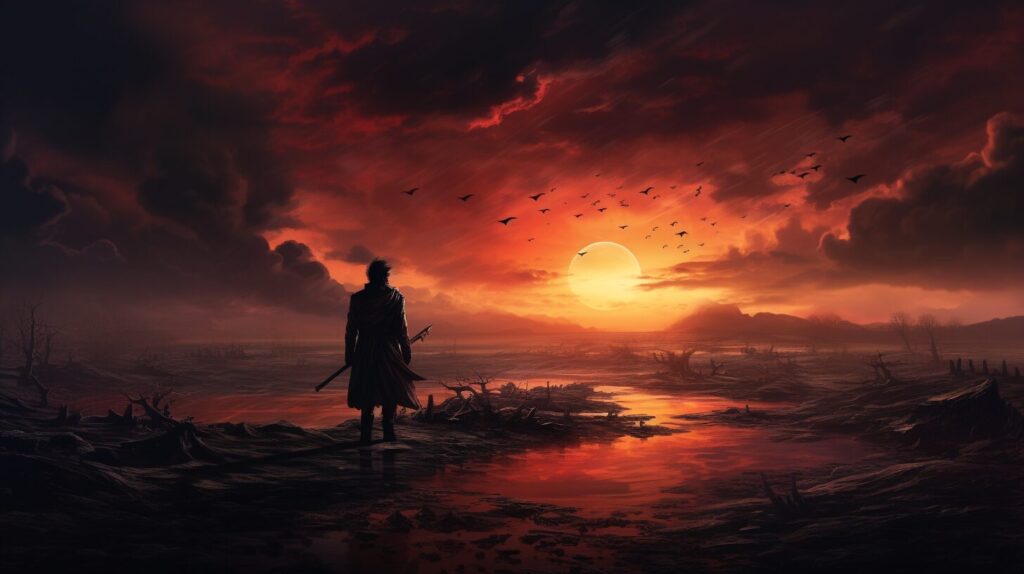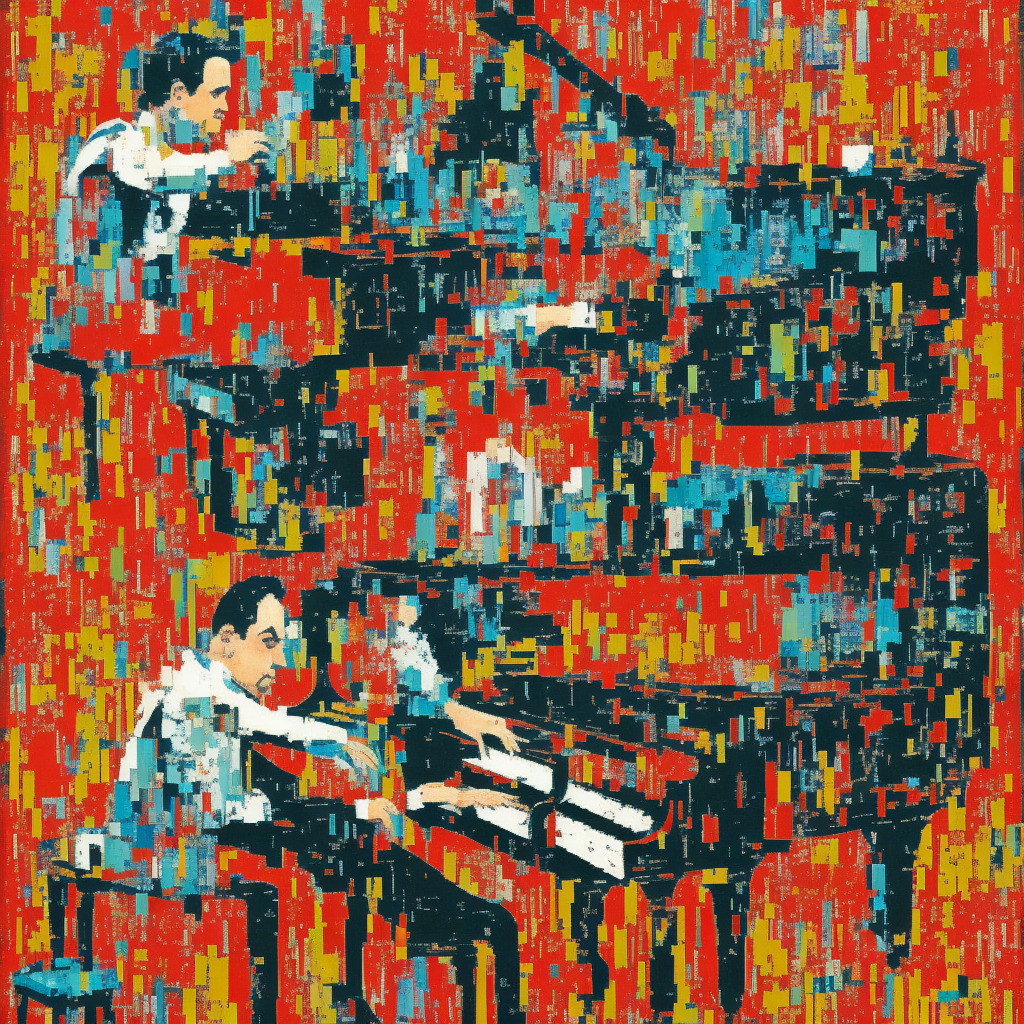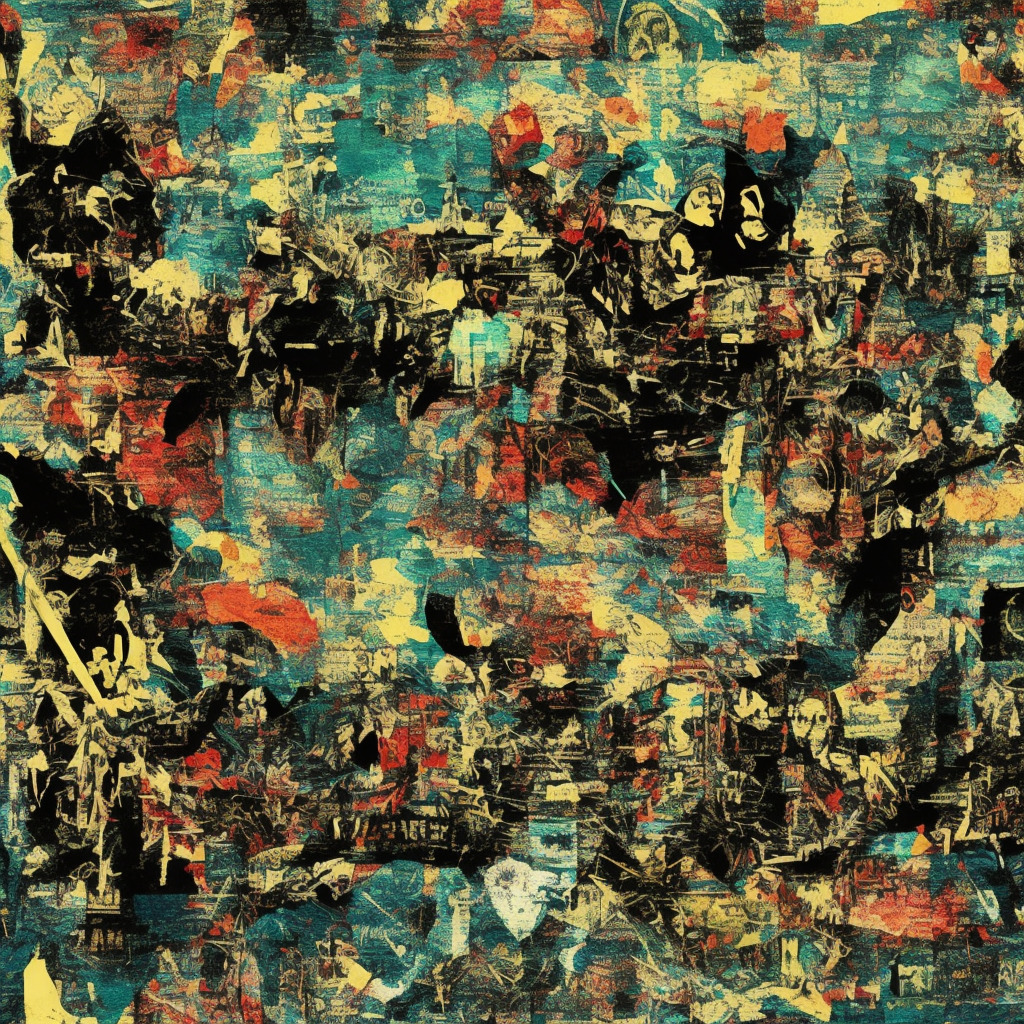🔔 Did you know? #ForWhomTheBellTolls was inspired by Hemingway’s novel! #Metallica’s mastery of storytelling & riffs = 🤘 timeless classic! #RockTrivia #NowPlaying Read about it: tinyurl.com/2ftfxj7z
The Timeless Resonance of a Metal Anthem
Dive into the enduring impact of Metallica’s “For Whom the Bell Tolls,” an iconic metal anthem that transcends time with its powerful themes and legendary riffs.
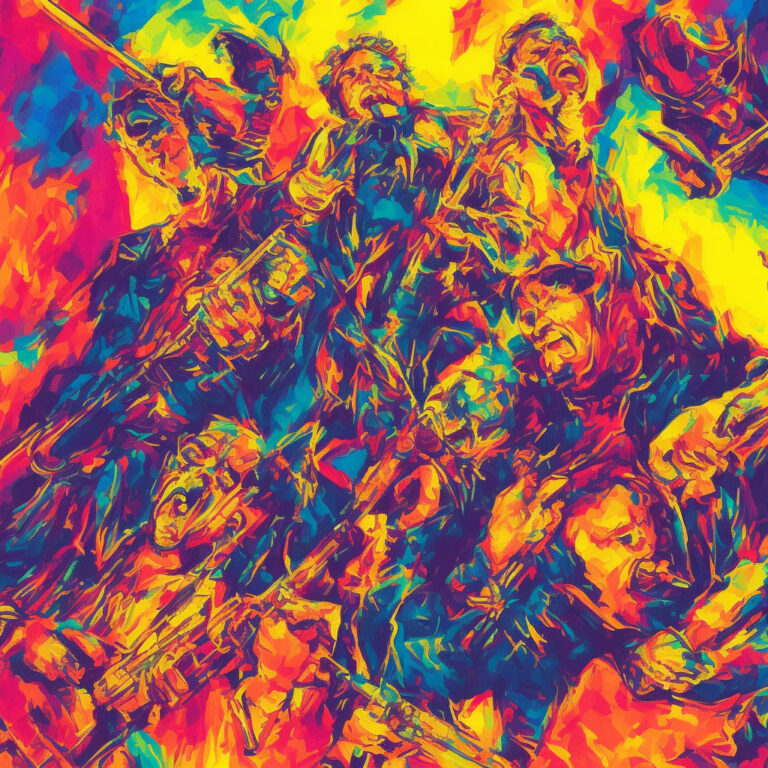
It’s no secret that Metallica is a titan in the world of heavy metal, and their legendary song “For Whom the Bell Tolls” plays no small part in their storied history. Originally released in 1984 on their sophomore album, “Ride the Lightning,” this song has captivated and energized metal fans for nearly four decades.
Forged in the fires of Los Angeles in the early 1980s, Metallica was formed by James Hetfield (vocals, guitar), Lars Ulrich (drums), Kirk Hammett (guitar), and, until his tragic death in 1986, Cliff Burton (bass). Their unique blend of thrash metal, aggressive rhythms, and powerful lyrics garnered them a dedicated fanbase that has only grown stronger over the years. The current lineup includes Robert Trujillo on bass, who joined the band in 2003.
“For Whom the Bell Tolls” is inspired by Ernest Hemingway’s novel of the same name, and its lyrics paint a harrowing picture of the horrors of war. The song kicks off with an iconic tolling bell, followed by an unforgettable bass riff from the late, great Cliff Burton. The track has since become a staple in their live shows, with fans eagerly awaiting the opening notes of this classic anthem.
Throughout their extensive career, Metallica has been no stranger to critical acclaim and accolades. Among their numerous awards, the band has taken home an impressive eight Grammy Awards, including Best Metal Performance and Best Rock Album. However, their journey hasn’t been without its share of controversy. The departure of original guitarist Dave Mustaine, who went on to form Megadeth, and their high-profile legal battle with Napster over file-sharing in the early 2000s made headlines and divided fans.
Despite any controversies, it’s undeniable that Metallica’s “For Whom the Bell Tolls” has left an indelible mark on the heavy metal genre. The song’s powerful themes of war, sacrifice, and the human spirit still resonate with fans today, serving as a testament to the band’s ability to craft timeless music with a message. Countless bands have been influenced by Metallica’s sound and contributions to metal, and their legacy will no doubt continue to inspire future generations of musicians.
Charting The Sound of Thunder
Ringing through the ages: Metallica’s “For Whom the Bell Tolls” proves its enduring power, charting decades after release and striking a chord with generations of fans.

Released on August 31, 1984, as part of Metallica’s second studio album “Ride the Lightning,” “For Whom the Bell Tolls” has become one of the band’s signature songs. Although the song did not chart immediately upon its release, it eventually gained significant popularity and airplay.
“For Whom the Bell Tolls” first made its mark on the charts in 2012, peaking at #32 on the Billboard Hot Rock & Alternative Songs Chart. This entry was prompted by the release of a live version of the song on Metallica’s “Beyond Magnetic” EP in 2011, which celebrated the band’s 30th anniversary. The substantial delay between the song’s release and its chart debut is a testament to the enduring appeal and influence of Metallica’s music on multiple generations of fans.
In terms of chart performance for the “Ride the Lightning” album itself, it peaked at #48 on the Billboard 200 chart in the US, while it reached #100 on the UK Albums Chart. The album was eventually certified 6x Platinum by the RIAA in the United States, with sales of over 6 million copies, proving that “For Whom the Bell Tolls” has contributed significantly to the band’s overall success.
As a fun piece of trivia, “For Whom the Bell Tolls” was ranked at #16 in a list of “The 100 Greatest Guitar Songs of All Time” by Rolling Stone magazine in 2008, which speaks to the song’s impact on the world of rock music.
Decoding the Classic Lyrics
Make his fight on the hill in the early day
Constant chill deep inside
Shouting gun, on they run through the endless grey
On they fight, for they are right, yes, but who’s to say?
For a hill, men would kill, why? They do not know
Stiffened wounds test their pride
Men of five, still alive through the raging glow
Gone insane from the pain that they surely know
For whom the bell tolls
Time marches on
For whom the bell tolls
Take a look to the sky just before you die
It is the last time you will
Blackened roar, massive roar fills the crumbling sky
Shattered goal fills his soul with a ruthless cry
Stranger now, are his eyes, to this mystery
He hears the silence so loud
Crack of dawn, all is gone except the will to be
Now they see what will be, blinded eyes to see
For whom the bell tolls
Time marches on
For whom the bell tolls
In the iconic song “For Whom the Bell Tolls,” Metallica paints a vivid picture of war and its consequences. The lyrics delve into the psyche of soldiers on the battlefield, grappling with the complexities of their motivations and the effects of the violence they witness.
The song was released in 1984, a time when the world was still recovering from the lingering effects of the Cold War and the Vietnam War. These conflicts had a profound impact on global politics and the lives of those who fought in them. Metallica’s lyrics serve as a searing reminder of the senselessness of war and the human cost associated with it.
In the chorus, the lines “For whom the bell tolls / Time marches on” reference the famous line by the English poet John Donne, “Never send to know for whom the bell tolls; It tolls for thee.” This line serves as a reminder that death is an inevitable part of life, and that in times of war, it can be difficult to see beyond the immediate suffering and loss.
The lyrics also touch upon themes of pride and the futility of fighting for a cause that may ultimately be meaningless. With lines like “For a hill, men would kill, why? They do not know,” Metallica forces the listener to question the motives behind warfare and its devastating consequences.
Thus, “For Whom the Bell Tolls” embodies the spirit of the time in which it was written, echoing the anxieties and uncertainties of a world recovering from a tumultuous era marked by conflict and turmoil. The song serves as a powerful reminder of the human experience of war, urging listeners to reflect on the deeper meaning behind the violence that has shaped our world.
A Visual Ode to “For Whom the Bell Tolls”
“Experience the electrifying power of Metallica’s ‘For Whom the Bell Tolls’ through iconic live performances and creative fan-made tributes, keeping the song’s spirit alive and resonating with audiences worldwide.”
To truly appreciate the impact of Metallica’s “For Whom the Bell Tolls,” one must also delve into the visual representation of the song in its music video. Although there isn’t an official music video for “For Whom the Bell Tolls,” there are several noteworthy fan-made videos and live performances that capture the essence of the song’s powerful message and Metallica’s electrifying stage presence.
One of the most memorable live performances of “For Whom the Bell Tolls” took place at the Day on the Green festival in Oakland, California, in 1985. This performance, captured on video, showcases the band’s raw energy and the passionate connection they had with their fans. Metallica’s frontman, James Hetfield, commands the stage while the late Cliff Burton’s iconic bass solo reverberates through the stadium, creating an atmosphere that can only be described as electric.
Fan-made videos have also played a significant role in keeping the spirit of “For Whom the Bell Tolls” alive. One such video, created by YouTube user “metfan4l,” combines footage from the 1971 film adaptation of Ernest Hemingway’s novel of the same name with Metallica’s live performance of the song. This video not only highlights the connection between the song’s lyrics and Hemingway’s story but also showcases the band’s ability to connect with their fans through their powerful live performances.
Another fan-created video tribute to “For Whom the Bell Tolls” was crafted by the talented YouTube user “Kerrang!” The video cleverly combines footage from the classic movie “Zombie” with a live performance of the song. The juxtaposition of the horror film imagery and the song’s grim undertones creates a thrilling and haunting visual experience for the viewer.
In each of these videos, we can see the lasting impact of Metallica’s “For Whom the Bell Tolls” and its unique ability to inspire fans and artists alike. While there may not be an official, big-budget music video directed by a famous filmmaker, the passion and creativity of Metallica’s fans more than make up for it, offering a variety of visual interpretations that continue to resonate with audiences today.
Mastermind Behind the Magic: Composer James Hetfield
Taking center stage as the song’s composer and co-producer, James Hetfield is undeniably the driving force behind “For Whom the Bell Tolls.” This is far from his only noteworthy composition, as Hetfield has penned countless hit songs for Metallica, reflecting his artistic prowess and continually evolving musical style. Notable compositions from Hetfield include the ever-popular “Enter Sandman,” “Master of Puppets,” and “One” – all showcasing his technical skill and passion for storytelling through music. As a crucial member of Metallica, Hetfield’s contributions have not only shaped the band’s unique sound but have also left an indelible mark on the world of heavy metal.
Accolades, Appearances, and Cover Versions
“For Whom the Bell Tolls” reigns as an immortal heavy metal classic, transcending media barriers and inspiring an endless array of cover interpretations.

Since its release in 1984, “For Whom the Bell Tolls” has solidified its place as a heavy metal classic and a fan favorite in Metallica’s impressive discography. The song has been celebrated for its powerful lyrics and masterful instrumentation, earning it a spot on Rolling Stone’s list of “The 100 Greatest Metal Albums of All Time.”
“For Whom the Bell Tolls” has transcended the world of music, making its mark in various forms of media. The song has been used in several TV shows and movies, such as the 2001 film “Zoolander” and an episode of “The Sopranos.” Gaming enthusiasts might also recognize it from the popular video game series “Guitar Hero: Metallica,” where players can virtually shred along with the band.
Metallica’s influence has inspired many bands and artists to cover “For Whom the Bell Tolls.” Some notable mentions include a haunting rendition by the Icelandic band Sólstafir, which brings a new level of melancholy to the song. Additionally, rock band Moonsorrow put their own twist on the iconic track, and Apocalyptica, a Finnish cello metal band, released their interpretation of the song on their debut album “Plays Metallica by Four Cellos.”
With countless accolades and constant recognition in various forms of media, “For Whom the Bell Tolls” remains an enduring emblem of Metallica’s talent and impact on the world of heavy metal. As time goes on, we can expect more artists to pay homage to this timeless classic by producing their own unique cover versions, ensuring that the song’s legacy will continue to resound for generations to come.
Diving into the Musical Depths
Delving into the technicalities of “For Whom the Bell Tolls,” it’s evident that the song showcases Metallica’s signature sound and musical prowess. The track is written in the key of E minor, which lends itself well to the song’s heavy and dark atmosphere. The main riff, played by guitarist James Hetfield, features prominent use of the E pedal tone, a technique that has since become synonymous with Metallica’s style.
The chord structure of the song is relatively simple, primarily consisting of power chords that follow a descending pattern in the verses. This progression contributes to the ominous mood that permeates throughout the piece. The simplicity of the chord structure allows the other elements of the song, such as the intricate basslines and powerful drumming, to shine through and take center stage at various points.
One of the standout features of “For Whom the Bell Tolls” is the tempo, which sits at a moderate pace of around 120 beats per minute (BPM). This gives the song a deliberate, almost plodding quality that adds to its sense of foreboding. Throughout the track, drummer Lars Ulrich employs a mix of half-time and double-time beats, further enhancing the song’s dynamic range and keeping listeners engaged.
In terms of song structure, “For Whom the Bell Tolls” follows a fairly standard layout, with an intro, verse, chorus, and bridge sections. However, it’s the unique instrumental arrangements and performances within these sections that set the track apart. The haunting intro, for instance, features a heavily processed bass guitar solo by Cliff Burton, which creates an eerie, otherworldly effect that sets the tone for the rest of the song.
As the song progresses, the interplay between the guitars, bass, and drums becomes increasingly complex, with each instrument adding its own distinct voice to the mix. The bridge section, in particular, showcases the band’s tight synchronicity and technical skill, as the guitars and bass weave together intricate harmonies, punctuated by Lars Ulrich’s thunderous drum fills.
Overall, “For Whom the Bell Tolls” is a masterclass in metal music composition and performance. Its combination of simple yet effective chord structures, dynamic tempo changes, and intricate instrumental arrangements make it a timeless classic that continues to resonate with fans and musicians alike.

